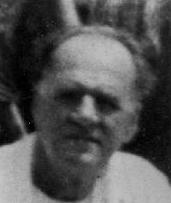
In late September, 1963, two months before allegedly firing the shots that killed President John F. Kennedy in Dallas, Lee Harvey Oswald left New Orleans and made a bus trip to Mexico City. His purpose was ostensibly to try to get visas in Mexico City to go to Cuba and Russia. Oswald first obtained a 15-day Mexican tourist visa on September 16 at the Mexican Consulate in New Orleans. (Obtaining Mexican tourist visa No. 24084, the one immediately before Oswald's No. 24085, was CIA agent William George Gaudet, but that's another story.) 1 On September 26, Oswald traveled by Continental Trailways bus from Houston to Laredo (the FBI could never determine how he got to Houston and where he spent the night there), entering Mexico at Nuevo Laredo 2 There Oswald boarded a Flecha Roja (Red Arrow) bus for Mexico City. Boarding this same bus was a man identified by his tourist card as John Howard Bowen. According to witnesses, he sat next to Oswald on the long overnight Flecha Roja bus ride to Mexico City. But Bowen's tourist card was full of false information. His real name was Albert Alexander Osborne. He was 75 years old, not 60; he was born in England, not America; and he was not a resident of Houston. 3 Why the false identity? By one account (his own), Osborne was just an itinerant preacher and missionary to Mexico, though his means of support seemed almost nonexistent. By another account, Osborne ran a stable of 25 to 30 assassins in Mexico, and was in Dallas on November 22 in charge of the team of shooters. Where does the truth lie? Somewhere deep in between? Such questions are what make "the Reverend" Albert Osborne so mysterious.

Two Australian traveling companions, Pamela Mumford, 21, and Patricia Winston, 22, boarded the bus at Monterrey, Mexico, and were taken back "to sit with the Mexicans" for lack of seats up front. 6 During the trip the two women heard Osborne, Oswald, and the McFarlands "talking a lot, and laughing." Oswald at one point came back and talked with Mumford and Winston, telling them that, having noticed their heavy overnight bags when they boarded, he had said to the man sitting next to him, "I wonder how you say 'Can I help you' in Spanish." 7 (Oswald was uncharacteristically sociable on this bus ride, which lends support to the theory that it was actually someone posing as Oswald. 8 It is a known fact that Oswald was later impersonated in Mexico City. But as this article is a study of Osborne, for present purposes and to avoid getting sidetracked we'll go along with the official story that it was Oswald on the bus. As we shall see, part of the mystery of Osborne is that he would persistently lie to the FBI--which is a crime--about this person on the bus whether it was Oswald or not.)
Mumford described Albert Osborne as an Englishman in his late 50's, short and plump, approximately 5'7", 160 pounds, white-haired and balding. 9 He spoke well, "with a cultured English accent," and was casually but not well dressed. "He was scruffy." Mumford spoke with him only during rest stops, and later couldn't recall being told his name. Osborne told her that he had lived off and on in Mexico for 25 or 30 years. When Mumford asked him about the Mexican weather, the Englishman said, "The young man traveling beside me has traveled to Mexico also. Why don't you talk to him?" Mumford gathered from this that Osborne and Oswald were not acquainted prior to the trip, and that Oswald was traveling alone. This impression was supported by the fact that the otherwise sociable Oswald stuck to himself during rest stops. (According to Mumford, Oswald ordered a big meal at every stop, apparently because he couldn't speak Spanish and never got what he wanted.) 10 Mumford had no way of knowing, and it is at least worth noting, that Oswald had twice used the alias "Osborne" in New Orleans, soon after working in Dallas with a man named John Grossi who used the alias Jack Bowen. 11
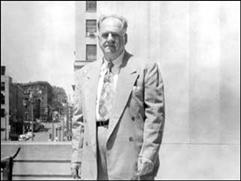
The bus arrived in Mexico City around 10 a.m. on September 27. Neither the McFarlands nor the Australian women noticed where the Englishman went upon leaving the bus. The last time the McFarlands saw Oswald, he was waiting "at the luggage check-out place." 13
Oswald, staying at the Hotel del Comercio in Mexico City, failed to get visas (or rather an impersonator failed in attempts to do so) at the Cuban and Russian embassies. Oswald left Mexico City by bus on October 2, heading for Dallas, where his pregnant wife and their daughter were living, and where he would spend his last days. As for "John Howard Bowen," he left Mexico City by bus on October 1, reentering the U.S. at Nuevo Laredo on October 2, one day before Oswald. 14
The FBI, in investigating Oswald's life following the JFK murder and that of the accused assassin, was interested in all contacts Oswald had during his trip to Mexico City. The FBI found that "unidentified investigators of the Mexican Government," shortly after the assassination, had taken both the original and duplicate copies of the Flecha Roja passenger list for that trip. 15 The FBI had to use immigration records and a baggage list to get the names of people who had traveled on the same bus as Oswald. The FBI found and interviewed Mumford, Winston, and the McFarlands. It had no luck finding a John Howard Bowen in Houston or Mexico. In its files, however, the FBI found that in June, 1942, John Howard Bowen, operator of a boys' camp at Henderson Springs near Knoxville, Tennessee, had been accused by one of the boys of tearing down an American flag and stomping it in the ground. An investigation found no evidence of any such act disrespectful of the United States. 16 The FBI also found that in 1953 John Howard Bowen had been arrested at the Woods Hotel in Houston and held for investigation in connection with a mattress fire. No charges were filed, but the FBI had John Howard Bowen's fingerprints from the 1953 arrest. 17
The 1942 flag desecration case led the FBI in its Oswald investigation to look for Bowen in Tennessee. It found that over the years the Knoxville Journal had published a few pieces on Bowen, being a former local resident, based on mail received about his missionary work in Mexico. This mail came mostly from Bowen himself, although a 1961 letter, postmarked San Martin Texmelucan (a town in the state of Puebla near Mexico City), was written by "Alberto Osborne." 18
On January 7, 1964, Clarence Anderson, the FBI legal attaché in Mexico City, reported that he had located and interviewed in San Martin Texmelucan an "elderly Canadian missionary" who said that he was acquainted with John Howard Bowen. The missionary's name was Albert Osborne. 19
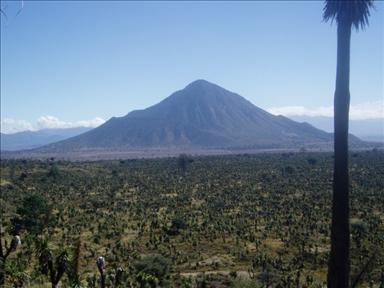
When the FBI interviewed Osborne again, on February 8, 1964, he was in Florence, Alabama, and claimed to be John Howard Bowen. He had been speaking at various rural Baptist churches in the area, and would soon be returning to his home, the St. Anthony Hotel in Laredo. He told FBI agent Ervin B. Bruninga that it was understandable that people might confuse him and Osborne, since they were both itinerant Baptist preachers who traveled the same areas of Mexico and were about the same size and age. Bowen said of his own background that as far as he knew he was born in Chester, Pennsylvania, in 1885, but had been raised in a Philadelphia orphanage and that all his relatives were deceased. He had worked as a youth counselor in Tennessee, and now considered himself to be an itinerant gardner and preacher. He claimed to be an ordained minister of the Missionary Baptist Convention. 21 Osborne, said Bowen, stayed at a home for ministers maintained in Texmelucan by two independent churches there. 22
Bowen acknowledged that he made a trip by bus from Nuevo Laredo to Mexico City on September 26-27, 1963. He had gone from there, he said, by bus to Puebla to do Baptist mission work in the area. He said that a dark-complected young man sat next to him on the bus to Mexico City who he presumed to be Hispanic and who could not have been Lee Harvey Oswald. Bowen said that the young man went to sleep soon after boarding the bus and did not converse with him or anyone else. There was no young English couple sitting in front of or behind them. Bowen said that he had never taught school, had never been to any foreign country except Mexico and Bermuda, had never written a book, and knew nothing about the Lisbon Earthquake of 1775. He agreed to be fingerprinted and to have his picture taken at this interview. 23
There were several things wrong with Osborne's story. The FBI had two photographs of Bowen from the files of the Knoxville Journal. Legal attaché Anderson, who no doubt saw the resemblance of the man in the photos to Osborne, had returned with the photos to Texmelucan on January 21. The man in both photos was identified as Osborne by a teenage caretaker at Osborne's mud wall residence, as well as by a local Mexican minister. The caretaker said that Osborne was on a trip somewhere in the United States and would be back in two or three weeks. 24 The FBI had also been advised that one Albert Osborne had been issued a Canadian passport at the Canadian Consulate in New Orleans on October 10, 1963. This Osborne was born in Grimsby, England, but claimed to be a naturalized citizen of Canada due to service in the Canadian Armed Forces. He gave as his permanent address since 1917 the same address in Montreal, Canada, that Osborne in Texmelucan had given to Anderson. This address (4114 Drummond Street) turned out to be the YMCA, which had no record of Osborne ever staying there. 25 The FBI also learned that Mexican immigration authorities were interested in detaining Albert Osborne if he returned to Mexico, as he had been ordered to leave Mexico in 1958 as an undesirable alien, having sold an automobile in Oaxaca without paying the import duties. 26 Various Baptist officials in the U.S. and in Mexico City had no knowledge of either Bowen or Osborne. 27 American Express in Mexico City did know of Bowen, as it had cashed numerous U.S. postal money orders for him over the past several years in amounts of $20 to $30 each. 28 Also, Oscar Ferrino, the owner of the St. Anthony Hotel in Laredo, identified the two Knoxville Journal photos as apparently being of John Howard Bowen, who he said had been staying at the hotel periodically for several years. Bowen had not, to Ferrino's knowledge, used the name Albert Osborne in Laredo. 29 The photos were shown also to Pamela Mumford and Patricia Winston. They were unsure of one of the photos, but felt that the other could be of the man who sat next to Oswald. 30 When Bowen was shown the two photos by agent Bruninga in Alabama, he identified one man in the photos as Osborne and one as himself. 31
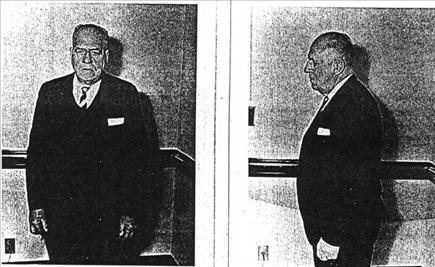
By this time the FBI could have charged Osborne with giving it false information. Instead, FBI agents Edward T. Steele and John E. Rodgers interviewed him again on March 5, 1964, this time in Nashville, Tennessee, where he was staying at the YMCA. After initially denying once more his true identity, Bowen finally admitted that his real name was Albert Osborne. He was born in Grimsby, England, on November 12, 1888, to James and Emily Osborne, and was one of nine children. As a youth he worked at the Grimsby Grocery Store. He joined the British Army in 1908, serving in India, Arabia, and Bermuda. He purchased his discharge in 1914 while in Bermuda, went to the United States and worked in several grocery stores in Washington DC, and attended Philadelphia Bible College for approximately one year. Osborne claimed to have been ordained as a minister in Philadelphia's Bethany Baptist Church in 1918. In any case he went to Canada and joined the Canadian Army, in which he served till the end of World War I. Osborne returned to Washington, where he met a Syrian with whom he went into the rug cleaning business. Despite traveling around the country with this business partner, at whose suggestion, Osborne said, he adopted the "more Americanized" name John Howard Bowen, Osborne claimed not to remember this Syrian's name. 33
Leaving the rug business, Osborne worked several years as an itinerant gardner, primarily in Virginia and North Carolina, did youth work in Knoxville, Tennessee, till 1943, then became an itinerant preacher throughout the South, and went to Mexico numerous times on missionary work. For the past 20 years he had maintained occasional residence and a permanent mailing address, Box 308, in Laredo, Texas, where he was well known as John Howard Bowen and was a member of Laredo's First Baptist Church. Osborne said the confusion in Mexico about his name arose in about 1956 when he had to produce identification papers for Mexican authorities in some sort of census, and all he had were his birth certificate and Canadian Army enlistment papers in the name of Albert Osborne He had had this dual identity ever since. 34

Osborne told his older brother Walter, whom he suddenly visited that November in the Old Folks Home in Grimsby, that he was traveling to Prestwick, Scotland, with a group of scientists who were going to Iceland to photograph a volcano that had emerged from the ocean. 38 Osborne visited his sister Mrs. Emily (Lillie) Featherstone in a rural district outside of Grimsby, where he stayed four or five days. According to Lillie, he then left for London, stating that he was going to Spain. 39 It is not known where Osborne was on November 22, the day of the JFK assassination. On December 5, he boarded an Icelandic Airlines flight in Luxembourg, Belgium, and flew to New York City. 40 Lillie received a letter from Osborne, dated December 14 and postmarked New York City, stating that he had arrived back in the United States on December 5. 41
Did Osborne or someone who knew him in England express foreknowledge of the assassination? A CIA cable from London to the CIA director on November 23, 1963, stated that on November 22 an anonymous call was made in Cambridge, England, to the senior reporter of the Cambridge News. "The caller said only that the reporter should call the American embassy in London for some big news and then rang off." The significance of this was that the call was made about 25 minutes before JFK was shot. 42 In the 1992 first edition of his book The Man Who Knew Too Much, JFK researcher Dick Russell stated that this phone call was made "from an English town a short distance from Grimsby." 43 Russell's cited source is the CIA cable, which was first released in 1976 (and reproduced in Michael Eddowes's 1977 book The Oswald File). But the cable specifically states that the call was "made in Cambridge, England"; there is no reference to Grimsby (which is not near Cambridge). Thus Russell was mistaken, and in the second, much abridged edition of his book the reference to the Cambridge call (along with the whole section on Osborne) is deleted. So while Osborne (or some associate) could conceivably have made this prescient phone call in England, there is no way to determine if he did so.
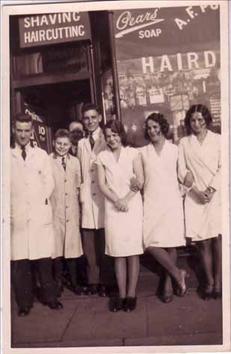
In Kill Zone, Craig Roberts states that Osborne reportedly ran "the ZR/RIFLE facility in Oaxaca, where "according to one informant, 25-30 professional assassins were trained and housed." 45 He says that according to Marita Lorenz, "the CIA people" involved in the assassination (being, in Lorenz's story, Frank Sturgis, Orlando Bosch, and other anti-Castro operatives) "left Dallas and traveled clandestinely to a ranch in Mexico" ("probably," Roberts states, the aforementioned assassins facility) "to hide out until after Christmas." Roberts's cited source is "Statement made in a deposition by Marita Lorenz. Plausible Denial, by Mark Lane, pg 303." But there is no reference on page 303 or on any other page in Lane's book about Lorenz mentioning in her deposition or elsewhere any clandestine trip by the Dallas team to a ranch in Mexico. Nor does Lorenz refer to any such trip in her own book Marita. 46 Frank Sturgis told Gaeton Fonzi, investigator for the House Select Committee on Assassinations (HSCA), that he knew exactly where he was on the day after the assassination. He was in Miami: "I had FBI agents all over my house." 47
Roberts's cited source on Osborne is the Bo Gritz book Called To Serve. According to Gritz, the older tramp arrested in Dealey Plaza "is thought to be Albert Osborne" (thought by whom?), "the leader of a CIA executive-action triangular-fire rifle team, based at the time near Oaxaca, Mexico." 48 Gritz cites no source, but similar claims about Osborne are made in Dope, Inc., a book published by the research organization of Lyndon LaRouche. In 1941, according to this work, FBI director J. Edgar Hoover, Sir William Stephenson of Britain's wartime Special Operations Executive (SOE), and SOE officer Louis Mortimer Bloomfield created a secret assassination unit under the direction of Albert Osborne, a minister of the American Council of Christian Churches (ACCC) and Hoover's "trusted agent of thirty years." 49 (Roberts also states that Osborne "posed as a missionary with the American Council of Churches" [sic]. 50 In fact Osborne was ostensibly a Baptist minister, his missionary work, as such, seems to have been associated with Baptist churches, and none of the Osborne-related FBI reports refer to the ACCC, a right-wing organization headed by Carl McIntire and Texas oilman H.L. Hunt and with which the Southern Baptist Convention was not affiliated.) 51 The book by the LaRouche group states that "it was Osborne and a team of seven expert riflemen from the Puebla 'kill unit' who carried out the (JFK) assassination." 52 The book attributes this information to "the author 'Torbitt.'" This brings us to the so-called Torbitt Document, and perhaps to the original source of the story of Osborne as the leader of a group of Mexico-based assassins.
William Torbitt was a name used by the late David Copeland, a Texas attorney whose clients included JFK researcher Penn Jones. 53 Torbitt's manuscript entitled Nomenclature of an Assassination Cabal ("The Torbitt Document") began circulating in 1970, and is presently published as NASA, Nazis & JFK. This work boils the JFK assassination down (or should I say up?) to a bewildering conspiracy involving (in layered degrees of participation) almost everyone you've ever read about in the assassination literature, starting at the top with Johnson, Hoover, Bloomfield, and a secret U.S. government agency called the Defense Industrial Security Command (DISC). 54 According to Torbitt, Osborne's stable of professional assassins was kept at "Clint Murchison's huge ranch" in Mexico. 55 Torbitt again associates Osborne with the "espionage cover group" ACCC, and says that working with Osborne, and also using the name John Howard Bowen, was DISC agent Fred Lee Chrismon (sic). Chrismon, says Torbitt, was "a Syrian immigrant" who had been "closely associated with Osborne since the 1920s," and was the oldest of the three Dallas tramps. 56 (Fred Lee Crisman was born in Tacoma, Washington, in 1919. He was not Syrian and was only a child in the 1920s. The HSCA found that Crisman [misspelled Chrisman in the committee's report] bore a strong resemblance to the older tramp, but was teaching school in Rainier, Oregon, on the day of the assassination.] 57 According to Torbitt, Osborne was in Dallas with about ten of his professional assassins, including William Seymour (shooting from the Texas School Book Depository building), Emilio Santana (a shooter in the Dal-Tex Building), and Manuel Gonzales (sic) (firing from behind the Grassy Knoll fence). 58
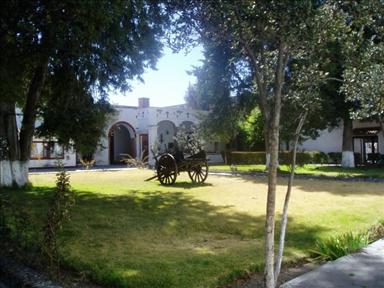
In sum, then, any evidence that Osborne led a group of 25 to 30 assassins is not to be found in any trial transcript from the Buddy Floyd murder case (Sapet v. State, 256 SW2nd 154), but rather, according to Torbitt, in the "Bill Allcorn private file" on that case.
Before leaving this issue, there is an interesting claimed aspect of Osborne's "missionary work" that I have not yet mentioned, as Osborne (inexplicably, if the claim is true) never mentioned it to the FBI. Oscar Ferrino, the owner of the St. Anthony Hotel, told the FBI that as part of his missionary work Osborne (whom Ferrino knew only as John Howard Bowen) was "operating a school for approximately 25 to 30 boys." 61 Mrs. Lola Loving of Forest Grove, Oregon, who sent monthly contributions to Osborne, told the FBI that she and her late husband had met Osborne in Mexico City, and that Osborne (whom she also knew as Bowen) had a mission in Texmelucan that "consisted of his own large home where he gathered young men who appeared to have no homes or ties, trained them and sent them out on their own as missionaries." 62 Reverend Walter Laddye Hluchan of Eagle Pass, Texas, told the FBI that Osborne had "for many years given religious instruction to Mexican boys who resided at his residence." 63 Mrs. Bessie White of Pikeville, Tennessee, who sent a monthly contribution to "Bowen," told the FBI, to quote its report, that Bowen had "several Evangelists working under him at this mission that he operates." She said that the evangelists were "reportedly Mexicans and are working throughout Mexico." (She said that Bowen never solicited contributions from her, but did notify her that "the cost of supporting one of the Evangelists had increased from $25 to $35 per month." Mrs. White increased her contribution accordingly.) 64 But it is noteworthy that these were all second-hand accounts by people who had not been to Osborne's Mexican residence. At no time, according to all the related FBI reports, did Osborne in his interviews mention these boys or "evangelists" in training who resided at his home, nor did the FBI ask him about them, nor did FBI legal attaché Anderson seem to see any evidence of them when he twice visited Osborne's Texmelucan "mud wall dwelling." The first time there, Anderson interviewed Osborne, with no mention of anyone else around, and the second time he found a teenage caretaker, "the only person having knowledge of (Osborne's) movements," and who himself would frequently visit his family in Oaxaca when Osborne wasn't home. 65 So it's intriguing to find different sources referring to "25 to 30" boys, evangelists, or young men allegedly staying at Osborne's place. One may therefore legitimately ask (as the FBI apparently didn't), just how old these 25 to 30 people were, what kept this "school" financed, exactly where it was located, and what or who kept the "boys" fed, busy, and out of trouble during Osborne's incessant traveling.
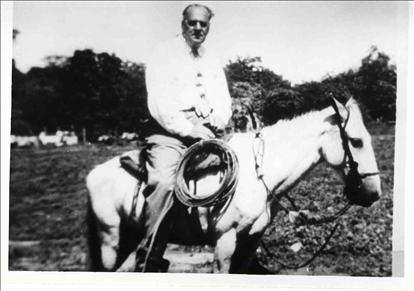
The late Richard E. Sprague, who worked as a consultant in both the Jim Garrison and HSCA investigations, alleged that the conspirators had meetings in September of 1963 in a Mexico City apartment, and that among those who attended these meetings were Osborne and Oswald. 67 If there is any truth to this allegation, could attending such a meeting be at least part of the reason for Oswald's trip to Mexico City, with Osborne traveling beside him but later denying it? And what might this itinerant preacher bring to such a conspiracy? (A team of professional assassins?) Alternatively, if there were no such meetings, is it possible, as Groden and Livingstone suggest, that Osborne was an intelligence "tail," that he "followed people," and in this case he was following Oswald? 68
While it is a crime to make false statements to the FBI, particularly when one makes a habit of it, extraordinary leniency was shown to this mysterious fellow who lied deliberately and repeatedly to the FBI in the biggest (though hardly the most competent) murder investigation of the 20th century. The FBI, rather than charging Osborne with a crime, simply quit talking to him. The Warren Commission Report, issued in September 1964, quaintly argued that Osborne's mendacity was such that it helped to establish the truth (Osborne did sit by Oswald). The report had this to say about Osborne's criminal conduct: "Osborne's responses to Federal investigators on matters unrelated to Oswald have proved inconsistent and unreliable, and, therefore, based on the contrary evidence and Osborne's lack of reliability, the Commission has attached no credence to his denial that Oswald was beside him on the bus." 69 But the possible implications of their contact, accentuated by Osborne's lying about it to the end, simply fell by the way. The Warren Commission concluded that there was "no basis for suspecting (Osborne) of any involvement in the assassination." 70
The HSCA for its part showed no interest at all in the Osborne issue. It completely avoided the subject with this statement: "It is the conclusion of this Committee that the Warren Commission correctly established that Oswald had traveled to Mexico City. Hence, this Committee has chosen not to reinvestigate Oswald's travel to and from Mexico City." 71
Albert Osborne died, apparently of food poisoning, on August 31, 1966, in San Antonio, Texas. 72 He was 77 years old. Reverend Lyman Erickson of San Antonio, who occasionally provided Osborne a room and helped him in his final days, told the BBC program "Kennedy: The Grimsby Connection" in 2003 that he suspected that Osborne was an intelligence agent. "My problem," said the reverend, "is I don't know if he was an agent for the United States or a foreign government." 73
Researcher John Armstrong, noting that some Protestant missionaries have been known to be funded in part by U.S. intelligence, has listed several indications that Osborne had a U.S. intelligence connection, including the contact with Oswald, the use of dual identities, the use of false addresses, unknown source of income, and the failure of the FBI to prosecute him for false information. 74
Reverend James Timmons of Eagle Pass, Texas, who had known Osborne since about 1944, aptly described him for the FBI in 1964 as a person who "acted mysteriously and secretively." 75 As Reverend Erickson said of what Albert Osborne's story was really all about, "I doubt we'll ever have a final answer." 76
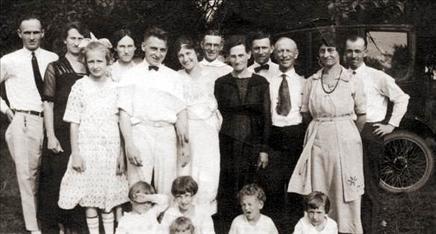
Footnotes:
1. William George Gaudet worked for the CIA for over 20 years under cover of publishing a Latin American newsletter. In 1978 the elderly retiree admitted to researcher Anthony Summers that he was "just loaded down with coincidences," having seen Oswald handing out leaflets in New Orleans as well as talking with former FBI agent Guy Banister. Though Gaudet traveled to Mexico at the same time as Oswald, he said that he went by air on business that he couldn't recall. When the FBI gave the Warren Commission the list of all the Mexican tourist cards issued on the same day as Oswald's, Gaudet's name right before Oswald's had been removed, with the note "No record of FM 824084 found." In 1975 under declassification the name of the holder was revealed. Gaudet had no explanation for the suppression of his name on the list, saying "I have no control over what the CIA did or did not do down in Mexico." Gaudet also told Summers, "I think (Oswald) was a patsy. I think he was set up on purpose." See Anthony Summers, Not in Your Lifetime (New York: Marlowe & Co., 1998), pp. 254-256.
2. John Armstrong, Harvey and Lee (Arlington, TX: Quasar, Ltd., 2003 ), pp. 606-607.
3 Warren Commission Exhibit No. 2195 (v. 25), p. 26.
4. Michael Eddowes, The Oswald File (New York: Clarkson N. Potter, 1977), p. 64.
5. Warren Commission Testimony of Pamela Mumford, May 19, 1964, and Affidavit of John Bryan and Meryl McFarland, May 38, 1964.
6. Mumford Testimony.
7. CE 2194 (v. 25), p. 23.
8. Researcher John Armstrong is known for the general two-Oswald theory, detailed in his massive tome Harvey and Lee.
9. Mumford Testimony.
10. Ibid. According to the FBI, Mumford recalled that Osborne said "he was retired and had lived in Mexico about 30 years" (CE 2195, p. 23). In her Warren Commission testimony, Mumford said Osborne told her "he had lived on and off in Mexico for 25 years."
11. CE 2195, pp. 58-59, 65-67.
12. Ibid., p. 42.
13. McFarland Affidavit.
14. CE 2121 (v. 24), p. 599-600; CE 2195, p. 27. Since Oswald was impersonated at the embassies (see the HSCA's "Lopez Report"), the real reasons for his going himself to Mexico City are open to question.
15. CE 2121, pp. 623-624.
16. CE 2195, p. 28.
17. Ibid., p. 61; Armstrong, p. 618.
18. CE 2195, p. 29.
19. Ibid., p. 30. Anderson is identified in FBI reports as "Confidential Informant Dallas T-4" (Armstrong, p. 620).
20. CE 2195, p. 30.
21. Ibid., p. 35.
22. Ibid., p. 36. Bowen said that once in about 1958 he and Osborne were staying at the same hotel in Oaxaca, and Bowen borrowed Osborne's identification papers, when he couldn't find his own, to show Mexican authorities. Bowen said that he later found his own papers and had never before or since claimed to be anyone other than John Howard Bowen. Osborne had told contributor Lola Loving a different story, and would later tell FBI agents Steele and Rodgers yet another one, regarding the dual identity.
23. Ibid., pp. 37-38. Bowen said that a man and a woman about 60 years old sat in front of them, the man being retired from the Bermuda Police Department. Seated behind Bowen and the sleeping Hispanic were two Mexican women and a child. Bowen claimed he couldn't recall who the other passengers might have been.
24. Ibid., pp. 30-31.
25. Ibid.
26. CE 2121, p. 576; CE 2195, p. 34.
27. CE 2195, pp. 31, 62-63.
28. Ibid., p. 34.
29. Ibid., p. 38.
30. Ibid., p. 29.
31. Ibid., p. 36.
32. Ibid., pp. 39-40.
33. Ibid., p. 45. According to Osborne's birth certificate, he was born in the District of Caister, Sub-District of Great Grimsby in the County of Lincoln, at 106 Oxford Street, New Clee, England. Grimsby is a chief British fishing port, and Osborne's father was a fisherman. The information that Osborne worked at the Grimsby Grocery Store as a youth came from his sister Mrs. Ada Amos (Ibid., p. 43).
34. Ibid., p. 45. Another mystery is the question of whether Osborne ever married. His brother Walter and sister Emily Featherstone were interviewed in February 1964 by the Grimsby Police, and the FBI report says "they have heard that he was married and had a son but have no idea of the present whereabouts of them" (CE 2195, p. 42). The same report relates that his sister Ada Amos said that Osborne had married, "wife's name and whereabouts being unknown, had one son, reportedly killed in action in the U.S. Armed Forces during World War II, has a daughter-in-law and grandson in the United States, whose names and whereabouts unknown" (CE 2195, p. 43). One of Osborne's contributors, Mrs. Louise Fuller Fraley of Appalachia, Virginia, who knew him as Bowen, told the FBI in February 1964 that she had gathered from letters and conversations that his wife had been killed in 1963, and that his children had died in India where he reportedly had been a Baptist missionary (CE 2195, p. 55). Yet the FBI reports of its interviews of Osborne himself are completely silent as to whether he mentioned any wife or children or whether the FBI asked him about any. One would think that the FBI, interviewing Osborne four times, would have liked to interview any spouse at least once or would have sought information about her.
35. Ibid., p. 43. The FBI interviewed Osborne's sister Ada Amos in Gary, Indiana, on February 26, 1964. Soon afterwards, according to the British author Michael Eddowes, she visited her sister Emily and Emily's daughter in Grimsby and told them about the interview. She said that from the line of questioning she concluded that the FBI suspected that Albert had been a spy. She was told by the agent that Albert had died but she didn't know when, where, or why (Eddowes, p. 67). Why would the FBI tell his sister that Osborne was dead?
36. Ibid., p. 47.
37. Armstrong, p. 619. The FBI reported that INS airline and steamship records "failed to disclose any identifiable information regarding one JOHN HOWARD BOWEN and his alleged departure from New York on November 13, 1963" (CE 2195, p. 64). This is not surprising, since Osborne did not depart New York as John Howard Bowen, he was traveling as Albert Osborne. However, he had written a letter to the Knoxville Journal, with an article duly announcing on November 14 that John Howard Bowen, "missionary to the Mixteca Indians in Mexico for the past 20 years," had left New York "for a speaking tour in England, Spain, Portugal and Italy," having been "invited by evangelical groups of each country" (Russell, pp. 485-486).
38. CE 2195, p. 42.
39. Ibid. Mrs. Lola Loving in Oregon, a financial contributor to Osborne, told the FBI on January 31, 1964, that "in the past month or so" she had received a letter from Osborne in Spain. (Loving knew Osborne by both of his names and said that whenever he wrote to her she never knew which name he was going to use.) (Ibid., p. 51). Bowen contributor Mrs. Joe Cridle of Virginia told the FBI that she had received a letter from Bowen postmarked November 28, 1963, Madrid (Ibid, p. 55). Reverend Walter Laddye Bluchan of Eagle Pass, Texas, told the FBI that Osborne "had apparently returned to Texmelucan shortly before Christmas, 1963, after participating in evangelistic services in England, Spain, Northern France and Northern Africa" (Ibid, p. 53).
40. Armstrong, p. 620.
41. CE 2195, p. 42.
42. NARA Document No. 104-10015-10121. See The Cambridge Call.
43. Dick Russell, The Man Who Knew Too Much (New York: Carroll & Graf, 1992), p. 486.
44. Penn Jones, Jr., Forgive My Grief IV, p. 111, quoted in Robert J. Groden and Harrison Edward Livingstone, High Treason (New York: Berkley Books, 1990), p. 180.
45. Craig Roberts, Kill Zone: A Sniper Looks at Dealey Plaza (Tulsa, OK: CPI, 1994), p. 69. ZR/RIFLE was the code name for a CIA project to establish "executive action" or assassination capability. This involved an agent code-named QJ/WIN whose job was to help find assassins for recruitment, and of whom former CIA director Richard Helms in 1975 told the Senate Intelligence Committee, "If you needed somebody to carry out a murder, I guess you had (this) man who might be prepared to carry it out" (Bernard Fensterwald, Jr., et al., Coincidence or Conspiracy? (New York: Zebra Books, 1977), pp. 204-205).
46. Marita Lorenz, Marita: One Woman's Extraordinary Tale of Love and Espionage from Castro to Kennedy (New York: Thunder's Mouth Press, 1993). Her claimed participation in the team's trip to Dallas is covered on pages 130-138.
47. Gaeton Fonzi, The Last Investigation (New York: Thunder's Mouth, 1993), p. 76.
48. Bo Gritz, Called To Serve (Sandy Valley, NV: Lazarus Publishing, 1991), p. 502.
49. "From Dope, Inc. : Organized Crime," in To Stop Terrorism, Shut Down Dope, Inc. (Leesburg, VA: LaRouche in 2004, December 2001), p. 122. Canadian JFK researcher Robert Charles-Dunne has pointed out that the address of the Montreal YMCA claimed by Osborne as a permanent address was only a few doors from the private residence of Louis Mortimer Bloomfield ("Albert Alexander Osborne," Post 3, The Education Forum, 6/20/05). In addition to Dope, Inc.'s claim that Bloomfield co-founded the alleged assassination unit in Mexico, and Torbitt's claim that the Montreal attorney was "the top coordinator for the network planning the (JFK) execution" (Nazis, p. 26), Bloomfield was a co-founder of Permindex (also called an "assassination bureau" by Dope, Inc.), a company whose board members included Clay Shaw, tried and acquitted in New Orleans in 1967 on charges of conspiring to assassinate JFK.
50. Roberts, p. 69.
51. Mrs. Bessie White, Vice President of the Pisgah Home Movement in Pikesville, Tennessee, told the FBI, to quote its report, that Bowen was "a representative of the Pentecostal or Full Gospel Church," which contradicts Osborne's regular identification with Baptist churches. It is possible that Osborne misled White, telling her what she wanted to hear, for monetary purposes, as she was contributing $35 a month to Osborne's missionary work. White described her organization, the Pisgah Home Movement, as "an independent, non-profit and non-denominational organization established to aid and assist any needy person, and to do the work of the Lord" (CE 2195, p. 57). Reverend James Timmons of Eagle Pass, Texas, who said he had known Osborne for some 20 years, told the FBI that to his knowledge Osborne "had not attended any ministerial school and his only affiliation with any religious group was the 'Plymouth Brothers' which he described as an English non-denomination sect." But Timmons also said that Osborne frequently visited the mission secretary of the Southern Baptist Convention in Alice, Texas (CE 2195, p. 41). On the ACCC, its website currently lists seven member denominations, all of them minor fundamentalist groups.
52. Dope, Inc., p. 122.
53. Dave Reitzes, "Fair Play for Clay Shaw?", http://mcadams.posc.mu.edu/fairplay.htm; Martin Shackelford, "Re: Mark Lane on 'Clay Bertand'," alt.conspiracy.jfk, February 3, 1999.
54. NASA, Nazis & JFK: The Torbitt Document & the Kennedy Assassination (Kempton, IL: Adventures Unlimited, 1996), pp. 34-36, 54, 121-123.
55. Ibid., p. 114.
56. Ibid., pp. 109, 114.
57. FBI File No. 116-2694, "Fred Lee Crisman," September 13, 1947; HSCA Final Report, pp. 91-92, 607; Kenn Thomas, Maury Island UFO: The Crisman Conspiracy (Lilburn, GA: IllumiNet Press, 1999), p. 81. Crisman, an Army Air Corps pilot in World War II, was involved in 1947 in reported UFO sightings over Maury Island in Washington state's Puget Sound, and reported recovering debris spewed from one of the UFOs. Crisman also claimed to have battled in underground caverns with subterranean beings called deros. He used a submachine gun while the deros used laser rays. (See Thomas.)
58. NASA, pp. 129-131, 173.
59. Alicia A. Garza, "Jim Wells County," The Handbook of Texas Online.
60. NASA, pp. 107-109. According to Parr biographer John E. Clark, Parr attorney Alaniz warned Jake Floyd on the night of September 8, 1952, that two professional killers from Mexico had a contract to kill him. Alaniz claimed not to know who was behind the contract, but that the leader of the killers was Mario Sapet, known as "The Turk." Floyd's son Buddy was murdered by mistake that same night. The murder weapon was traced to Sapet, who owned a San Antonio bar and was also a special deputy sheriff of Parr-run Duval County. Sapet was convicted for the murder and sentenced to 99 years. The triggerman Alfredo Cervantes was a Mexican national whom Mexican authorities refused to extradite, but he was tried and convicted in Mexico City and given a 30-year prison sentence. Alaniz, tried in Waco as an accomplice, was acquitted because he had tried to prevent the murder. (See John E. Clark, The Fall of the Duke of Duval: A Prosecutor's Journal [Austin, TX: Eakin Press, 1999, pp. 65-68.) According to Reverend James Timmons, Osborne often visited Reverend Joe Amarine, Mission Secretary, Southern Baptist Convention, in Alice, Texas, part of Parr's political stomping ground, and site of the Buddy Floyd murder (CE2195,41). Interestingly, there were Oswald sightings in and around Alice in October, 1963, after Oswald had returned from Mexico and was known to be in Dallas (Chris W. Courtwright, "Oswald in Aliceland?", November in Dallas Conference, 1997). (This supports the two-Oswald theory, but again, that's another story. See note 8 above.) In 1975, Parr, faced with a prison sentence for income tax evasion, committed suicide (Clark, pp. 19-21).
In July, 1962, 10 years after the Buddy Floyd murder, a Mexican in Guadalajara, Ylario Rojas Villaneuva (aka Eladio Villanueva Ramirez) wrote to authorities in Alice, Texas, claiming knowledge of the conspiracy by Alfredo Cervantes and others to murder Jake Floyd. In the letter Rojas suggested a meeting. In exchange for $40 plus travel expenses, Rojas told District Attorney Sam Burris and an assistant in a meeting in Nuevo Laredo that Cervantes had been a customer in a bar that Rojas owned in Chapala, Mexico, and that two Americans named Norman Neocon and Louis Feano had hired Cervantes to kill Jake Floyd. In September, 1962, Robert Adams, the American consul in Mexico City, reported that an investigation failed to verify Rojas's story. Rojas, according to the FBI report on his case, was considered by Burris and Adams to be a "liar," "irresponsible and lazy," who tried to exploit others for money, and had apparently learned of the Cervantes case through an associate in Guadalajara.
Following the JFK assassination, Rojas wrote to Attorney General Robert F. Kennedy in December, 1963, telling him, "I used to be a friend of Lee Oswald, and also of Albert, as well as three more people. I knew about the plan, but I never thought that it would turn out to be a true plan." Interviewed by the FBI, Rojas said that the friendship with Oswald, Albert, and three Cubans involved the introduction of pro-Castro propaganda into Mexico via Cozumel. Rojas said that Oswald and the American called Albert also had reportedly laid plans to assassinate JFK. Rojas later identified Albert's real name, as Rojas had written it down, as "Advvin Walker," with Oswald's name spelled "Lee Harvei Osvvol." In March, 1964, Rojas signed a statement, as Eladio Villanueva Ramirez, for agents of the Mexican Federal Security Police, admitting that the statements he had made to RFK and to U.S. investigators were "false," that he had obtained the various names and other details from local newspapers, and that he had fabricated the story "in the hope of obtaining a reward." (CE 2121, pp. 641-646; see also Greg Parker, "Albert Alexander Osborne," Post 24, The Education Forum, 6/25/05.)
61. CE 2195, p. 48.
62. Ibid., p. 51.
63. Ibid., p. 53.
64. Ibid., p. 57.
65. Ibid., p. 31.
66. Ibid., p. 46.
67. Richard E. Sprague, The Taking of America 1, 2, 3 (Third Edition, 1985), Chapter 5 (http://www.ratical.org/ratville/JFK/ToA/ToAchp5.html).
68. Groden and Livingstone, p. 181.
69. Warren Commission Report, p. 305.
70. Ibid.
71. House Selection Committee on Assassinations, "Oswald, the CIA and Mexico City ('Lopez Report')", p. 3.
72. Armstrong, p. 622.
73. "Kennedy: The Grimsby Connection: Photo Report," Inside Out, BBC, January 20, 2003. Reverend Walter Hluchan, who knew Osborne, told Dick Russell in 1978, "I heard somebody say that they thought he (Osborne) was a Communist" (Russell, p. 777). In the 1978 novel LBJ and the JFK Conspiracy (Westport, CT: Condor), according to which the Russians were behind the assassination with the cooperation of Lyndon Johnson, authors Hugh McDonald and Robin Moore portray Osborne as a KGB agent who hires the assassin ("Saul" in McDonald's book Appointment in Dallas) and controls the patsy Oswald.
74. Armstrong, p. 622. Could John Howard Bowen have been an actual person? Researcher Greg Parker notes that Osborne had a Bowen birth certificate that, if faked, was good enough to fool Mexican authorities ("Albert Alexander Osborne," Post 28, The Education Forum, 6/26/05; CE 2121, p. 575). Researcher Dick Russell thinks this birth certificate was "counterfeit," which seems odd since Russell also thinks that Bowen and Osborne were in fact two different people (pp. 483-487). According to Armstrong (p. 618), a Bowen Social Security number (449-36-9745) was used by someone, either Bowen or Osborne, at various work places in the 1940s and 1950s. Osborne told contributor Lola Loving that John Howard Bowen had been an associate of his in the Texmelucan mission but had died, and that as contributions continued to arrive in Bowen's name, American Express had agreed to honor the contributions and make the payments to Osborne (CE 2195, p. 51). Thus Osborne had assumed the dual identity. Loving told Russell in 1978 that Bowen had died "probably in 1958" (Russell, p. 484). But Loving was repeating a story that Osborne had told her. The senior cashier at American Express who cashed money orders for "Bowen" told the FBI that he knew him only as Bowen, did not know Osborne, and could not substantiate the claim, made by Osborne to Loving, that American Express had agreed to honor payments for Osborne in the name of Bowen (CE 2195, p. 34). A further problem with the story is that Osborne himself denied the story to the FBI, telling them, once he admitted his real identity, that he began using the name John Howard Bowen in the 1920s because it sounded "more Americanized" (CE 2195, p. 45). But Osborne could have been lying then too. In any case the real Bowen, if he existed, must have died early on (apparently with no one to mourn him), since at no time does anyone other than Osborne seem to turn up using the name. In the case of everyone whom the FBI contacted who had crossed paths with Bowen, it apparently was always Osborne in reality. No associates or acquaintances seemed to have two people confused in terms of physical appearance. They were looking at Albert Osborne. So if the other man really existed, there seems to be no way today to answer the question, "What happened to John Howard Bowen?"
75. CE 2195, p. 41.
76. "Kennedy: The Grimsby Connection."
Other JFK articles:
Copyright 2005 by Ronald L. Ecker
Contact:
hobrad at outlook dot com
dragonswood at comcast dot net
Top of Page | The Ron Ecker Home Page